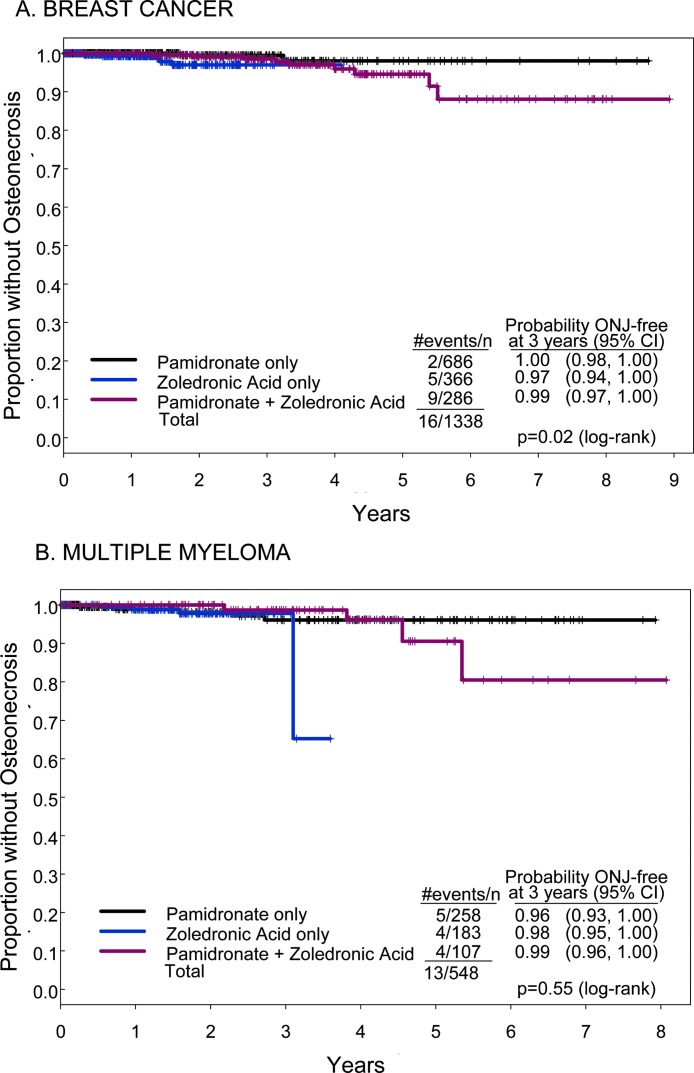FIG. 2.
Kaplan-Meier estimates of the proportion of patients free of ONJ over time according to type of bisphosphonate received. The Kaplan-Meier method was used to estimate the number of patients free of ONJ at 3 and 5 yr of bisphosphonate treatment. (A) Kaplan-Meier curve in patients with breast cancer. (B) Same analysis in patients with multiple myeloma. Black line, patients treated with pamidronate; blue line, patients treated with zoledronic acid; red line, patients treated with both pamidronate and zoledronic acid. In patients with breast cancer, the probability of being ONJ-free at 3 yr was 99.5% (95% CI: 98.4–100%) in the pamidronate only group, 97% (95% CI: 94.3–99.8%) in the zoledronic acid group, and 98.6% (95% CI: 96.9–100%) in patients treated with pamidronate followed by zoledronic acid. The comparable values for 5 yr were 98% (95% CI: 95.1–100%), inadequate data for zoledronic acid, and 94.6% (95% CI: 90.5–98.9%). In patients with multiple myeloma, the probability of being ONJ-free at 3 yr was 96% (95% CI: 92.7–99.6%) in the pamidronate group, 97.8% (95% CI: 95.4–100%) in the zoledronic acid group, and 98.7% (95% CI: 96.2–100%) in patients treated with both. The comparable data for 5 yr is 96.1% (95% CI: 92.7–99.6%), inadequate for zoledronic acid, and 90.6% (95% CI: 79.4–100%). Time to ONJ differed significantly between the bisphosphonates treatment groups.

